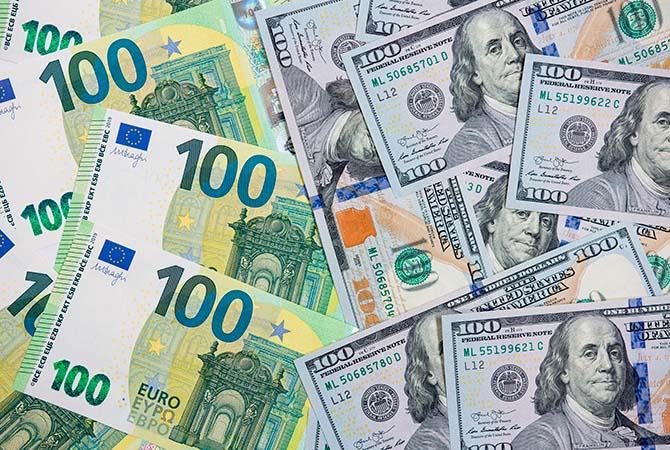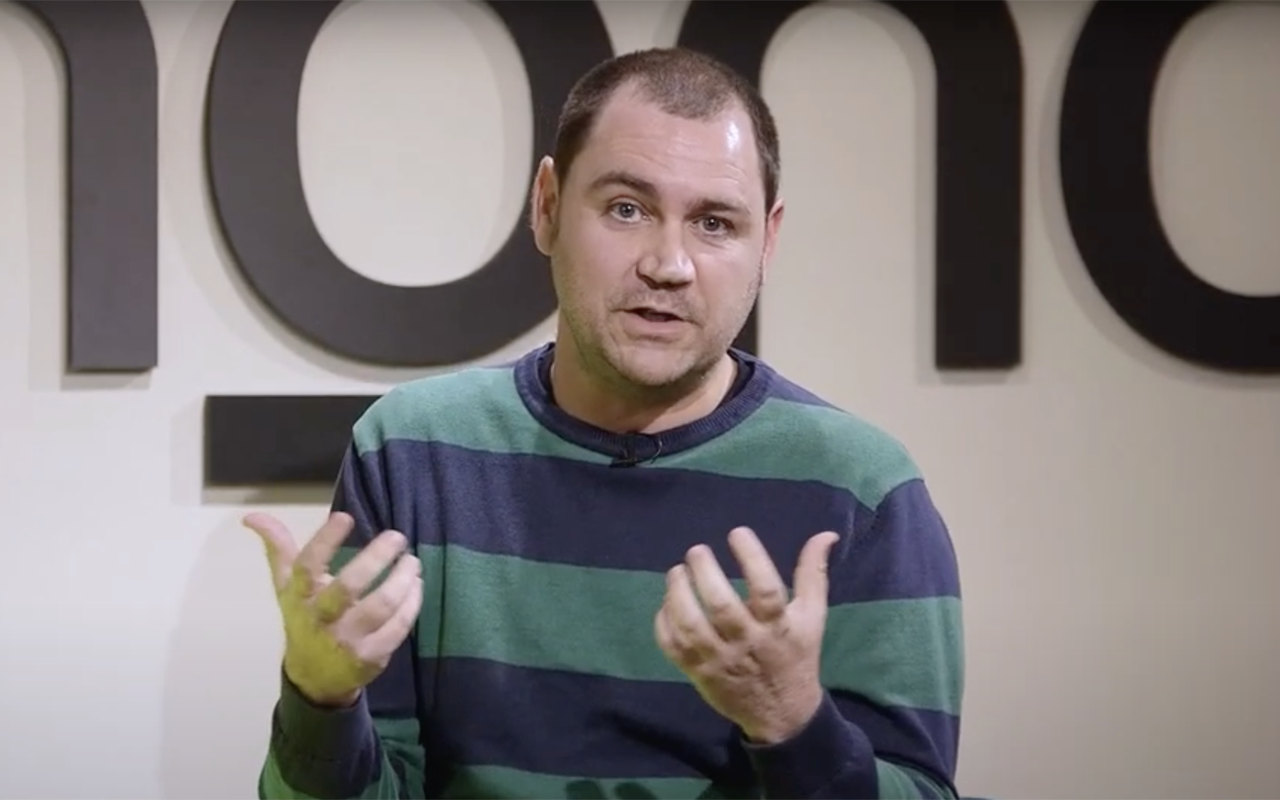No progress on working hours reduction
Negotiations between the Ministry of Labour, trade unions and employers on the implementation of the reduction of the working week to 37.5 hours have stalled. Its potential impact on the various economic sectors perpetuates a fruitless tug-of-war between these three actors.
The government’s proposal, with the approval of the trade unions, aims to reduce the legal limit on working hours from 40 to 37.5 hours per week in two phases: to 38.5 hours for the remainder of 2024 and to a maximum of 37.5 hours per week in 2025. This reduction in working time would not have to entail a reduction in pay.
If the proposal for the new working hours is finally implemented, it will, in theory, affect around 70% of the working population in Spain who are employed by others, equivalent to some 16.1 million workers, according to data from the National Statistics Institute (INE) for the first quarter of 2024.
In practice, however, although the current legal limit is 40 hours, the average effective working day in Spain is already 37.7 hours for full-time jobs. Therefore, according to the Labour Force Survey (EPA), this measure would affect some 8 million workers who currently work more than 37.5 hours a week.
It has the general support of the population
According to surveys, 80% of the working population in Spain are in favour of a reduction in working hours if it does not involve a reduction in pay. While 70% would still be in favour even if it meant a reduction in pay.
On the other hand, almost two out of every three SMEs and the self-employed, 58.8%, believe that it would not be beneficial. Among the reasons they articulate for this position, 40% state that it does not fit the profile of the company, 17.1% believe that productivity will fall and 10.1% believe that it will cause economic problems.
A familiar pattern of negotiations repeats itself
As happened when the reduction of the working week to 40 hours in 1983 came into force, the new proposal has met with the employers’ refusal. Represented by the CEOE and Cepyme, it is repeating, albeit in more politically correct terms, what it said more than 40 years ago: if people want to work less, they will have to earn less. He argues that reducing working hours would increase personnel costs and affect the competitiveness of companies.
For their part, the CCOO and UGT trade unions show their support for the measure, even so, frustrated by the lack of progress towards a satisfactory agreement, the CCOO’s secretary for trade union action, Mª Cruz Vicente, has warned that “If the negotiations do not progress, we will call for demonstrations”.
In this context, the Ministry of Labour is willing to facilitate a gradual implementation adapted to the needs of different economic sectors. At the same time, the government insists that reducing working hours will be implemented, although it is willing to negotiate the details and deadlines.
11Onze is the community fintech of Catalonia. Open an account by downloading the app El Canut for Android or iOS and join the revolution!
La pujada generalitzada de preus està complicant les finances de moltes llars. Cada vegada és més difícil quadrar els comptes per a arribar a final de mes i encara més dedicar una part dels nostres ingressos a l’estalvi. Davant aquesta situació, recollim onze consells per a millorar l’economia familiar.
- Aplicar la fòrmula del 50/30/20. Es tracta d’intentar distribuir els nostres ingressos de forma que el 50 % es dediqui a les despeses (llum, aigua, lloguer, hipoteca, telèfon, menjar, estudis…), el 30 % al nostre oci (les nostres sortides en esmorzars o dinars fora de casa, vacances, regals…) i el 20% restant a l’estalvi.
- Retallar subscripcions innecessàries. A quantes plataformes digitals estem subscrits? Les fem servir totes? Cal que les continuem pagant? I aquella subscripció a aquella revista que mai acabem llegint? Totes les subscripcions automàtiques s’han de revisar per valorar si són necessàries. Avui en dia existeixen diferents plataformes amb contingut en línia que són legals i gratuïtes, només cal fer una ullada per Internet per trobar-les. I recordem que les biblioteques també són una gran font de llibres i contingut audiovisual.
- Revisar els nostres contractes de llum, gas i telèfon. Cal revisar amb molta cura els contractes que tenim amb les diferents companyies de serveis. És una de les partides on més diners se’ns en van sense adonar-nos al cap de l’any. No podem prescindir d’aquestes despeses, però sí reduir-les.
- Fer més àpats a casa. Reduir les vegades que sortim a menjar fora de casa o que comprem menjar per emportar-nos pot arribar a ser una molt bona font d’estalvi. No cal deixar d’anar als restaurants, però sí reduir la quantitat d’àpats que fem fora de casa, i més si som una casa de família nombrosa.
- Reutilitzar. Quan una cosa se’ns faci malbé, mirem si podem reparar-la i allargar-ne la vida abans de llençar-la a les escombraries. També és una bona eina d’estalvi comprar roba de segona mà, llibres, mobles i fins i tot electrodomèstics.
- No comprar impulsivament. Una de les raons principals per les quals no fem un bon ús dels nostres diners són les compres compulsives. A partir d’ara, quan vulguem una cosa, donem-nos un marge de temps per saber si de veritat la necessitem. Ens sorprendrà comprovar que podem prescindir de gran part de les coses que volem comprar a cop de targeta.
- Comparar preus. Quantes vegades ens ha passat que comprem un telèfon mòbil, per dir un exemple, i l’endemà veiem una oferta del mateix producte en una altra botiga? Això ens passa per no comparar. Hem d’aprendre a comparar tot el que comprem, fins i tot el menjar.
- Fer servir menys el cotxe. Tot i que molta gent no pot prescindir del transport privat, sí que en podem reduir l’ús. Mirem d’utilitzar el transport públic o compartir cotxe si és possible. I fem ús també de la bicicleta, i sobretot, de les nostres cames, que caminar és sa i gratuït.
- Escollir una bona entitat financera. Són necessàries totes les nostres targetes de crèdit? Quines comissions ens cobra la nostra entitat financera? Revisem si aquesta entitat financera ens ajuda a tenir una bona economia personal, o si, per contra, cal que fem un canvi. Actualment, hi ha moltes entitats financeres amb eines que ajuden a controlar les teves despeses i que alhora et donen un cop de mà per estalviar: escollim una bona entitat financera pel nostre futur.
- Adaptar-nos a la nostra butxaca. Si ingressem una certa quantitat de diners, no fem més del que la nostra economia es pot permetre. No cal “estirar més el braç que la màniga”, com diem els catalans. Fem un ús responsable dels nostres diners segons els nostres guanys.
- Ser previsors. Hem d’analitzar l’evolució de les nostres despeses en els últims mesos per comprovar en què se’ns va els diners i on podem retallar. Davant l’actual situació inflacionària, en alguns casos serà necessari aplicar una “economia de guerra” segons com estimem que evolucionaran els nostres ingressos i despeses.
- Ja fa dies que sabem que els diners no fan la felicita. Però podem aportar estabilitat a la nostra economia personal per evitar-nos disgustos. A més, en aquests temps d’incerteses econòmiques, val la pena recordar la frase que ens va deixar el filòsof Sèneca: “No és pobre qui té poc, sinó qui molt desitja”.
Si vols descobrir la millor opció per protegir els teus estalvis, entra a Preciosos 11Onze. T’ajudarem a comprar al millor preu el valor refugi per excel·lència: l’or físic.
ACCIÓ has recognised this year’s 10 most innovative companies with the Catalonia Exponential Leaders’ award. They specialise in artificial intelligence, robotics and blockchain technologies, and are focused on revolutionising the fields of health, mobility, energy and food.
To give visibility to start-ups and companies that challenge established norms and reshape themselves through innovation, the Agency for Business Competitiveness (ACCION) organises the event known as ‘Catalonia Exponential Leaders’ every year.
In this year’s edition, a total of 213 projects were presented, of which 74% are emerging companies or start-ups and the rest are consolidated companies. The 10 chosen companies specialise in sectors and fields such as health and life sciences, mobility, energy, and food.
- BlindStairs. The platform proposed by BlindStairs works like an ‘anonymous Linkedin’. Its innovation begins with its anonymisation methodology, with a proprietary system of specialised AI models to anonymise professional profiles, to a level that until now has been unfeasible to automate and scale, eliminating any type of bias by gender, age or any other socio-demographic factor.
- Cuatrecasas. The Cuatrecasas law firm has been working in the field of generative artificial intelligence since 2015. Grouped under the CELIA division (Cuatrecasas Legal Expert – AI), they have enabled the firm to improve the quality, efficiency, and impact of its legal services. For example, the Harvey project, a digital legal assistant capable of answering legal questions and making legal comparisons and strategies, already has more than 1,000 users.
- Magnetika. This company offers a new wireless charging solution for electric vehicles, such as electric bicycles, urban vehicles, mobile robots or drones. New wireless charging solutions are changing the market, offering a more efficient, convenient and sustainable alternative to conventional wired or contact charging.
- Navozyme. Leading the transformation of the maritime industry with disruptive solutions that use blockchain technology to introduce pioneering electronic certificates, ensuring data integrity and real-time verification of documentation during port processes. In addition, thanks to the use of artificial intelligence to analyse data in real-time, Navozyme optimises the arrival of ships in port, reducing waiting times and minimising the carbon footprint.
- Ocean Ecostructures. Ocean Ecostructures has developed a technological solution to offset the impact of port and offshore structures by regenerating marine biodiversity. This solution is based on the installation of biomimetic, multi-technological and digitally monitored micro-shells (LBU) using robotic technology and AI.
- Oniria Therapeutics. Oniria Therapeutics is focused on the fight against cancer by offering an innovative approach to the oncology market with the oral drug ONR-001 (currently at TRL 4/5). This drug achieves, for the first time, over-activation of TET2, an essential tumour suppressor and dynamic factor that modulates many aspects of the tumour cell related to cancer persistence. It aims to reduce patient relapse or persistence and resistance to current treatments, which are responsible for 90% of cancer deaths.
- ScentXP. The technologies developed by ScentXp aim to reinvent the olfactory industry, starting with perfumery and cosmetics, transforming the industry’s value chain by orienting it towards digitalisation, sustainability, visualisation and graphic representation of odours, making it more democratic, transparent and accessible.
- Suara Cooperativa. Suara Cooperativa’s Social Digital Lab is implementing new services to improve people’s mental and physical health and wellbeing, using immersive and virtual reality. These services are materialised thanks to collaboration in three areas and between three actors: the social axis, Social digital Lab, the technological axis, Broomx, and the scientific axis, Consorci Sanitari de Terrassa.
- Time Is Brain. For every hour it takes to receive treatment for a stroke, the chances of recovery fall by 20%. In this context, Time Is Brain has developed BraiN20, a medical device in the form of an easy-to-install tablet that uses sensors to monitor the brain’s viability in real-time.
- Uobo. Despite the exponential growth experienced in recent years in terms of alternatives to animal products, there is little in the way of products that can replace chicken eggs. Uobo markets a 100% vegetable liquid egg mixture that offers the same versatility as traditional eggs and makes it possible to prepare all kinds of dishes without having to resort to the exploitation of animals.
11Onze is the community fintech of Catalonia. Open an account by downloading the app El Canut for Android or iOS and join the revolution!
Money laundering operations by criminal organisations can involve businesses the public administration and large banks working together to give a legal appearance to money obtained illegally. Juan Carlos Galindo, an expert in the prevention of money laundering and terrorist financing, explains the mechanisms money launderers use.
Almost three-quarters of criminal networks in the European Union use some form of money laundering to finance their operations and hide their assets. These transactions are estimated to have a total value of between 117 and 210 billion euros in the EU.
The main purpose of money laundering is to legalise the proceeds of criminal activity. It can be a relatively simple process carried out locally or nationally, or a very sophisticated process involving numerous intermediaries in several jurisdictions using the international financial system.
In an interview on the “ConPdePodcast” programme, Juan Carlos Galindo, an expert in the prevention of money laundering and terrorist financing, describes in detail how money is laundered. He begins by explaining the possible origins of this term: one that attributes the concept to Al Capone, who bought a chain of laundromats to use them as a legal front to recycle the money obtained from his criminal activities and another that mentions a Colombian method of counterfeiting American banknotes.
Galindo explains that there are three stages in money laundering – placement, transformation, and integration – and gives some practical examples:
1. Placement: This represents the first step in integrating the proceeds of crime into the legitimate financial system. This can be done through shell businesses, such as restaurants or cafés, which appear to have legitimate income.
2. Transformation: Layering or transformation involves converting the money into various financial or real estate assets to distance its illicit origin. This includes buying stocks, bonds, property and other assets through different companies.
3. Integration: The third and final stage of the laundering process aims to bring the money back into the market as apparently licit capital, allowing the criminal to make use of this money without arousing suspicion.
11Onze is the community fintech of Catalonia. Open an account by downloading the app El Canut for Android or iOS and join the revolution!
Can we change the world? What is our real capacity to impact the environment? Lara de Castro, HR Business Partner at 11Onze, explains what conscious consumption is and how we can contribute to the sustainability of the planet with our daily purchasing decisions.
We often underestimate the impact that our individual actions have on the surrounding environment. But all actions, no matter how small, contribute to shaping the world. Lara de Castro explains it in the following video with a very obvious example.
As she warns, there are many people who think that an individual act is often “too weak” to have a significant impact on the environment, “but this is not the case”. Every action counts and has consequences that can add up to those of the rest of the community. The reality is that “our daily decisions are relevant, no matter how small“. In this sense, the role that all purchasing decisions play if we are conscious consumers is very obvious.
What is conscious consumption?
Conscious consumers are people who choose products and services with criteria that go “beyond value for money,” as they include environmental and social impact as a decisive element in their purchasing habits. One consequence is the commitment to local commerce, which “is a way of supporting local producers and avoiding the economic and environmental impact of transportation,” as Lara de Castro explains.
Another example of conscious consumption can be found in water. If we want to reduce pollution on the planet, we can replace the consumption of bottled water, “with all the drawbacks that we know plastic has,” with tap water treated with sustainable filters.
As Lara de Castro points out at the end of the video, if we all become more conscious “in the small details of everyday life” the reality is that “we can change the world.” The decision is ours.
If you want to discover how to drink the best water, save money and help the planet, go to 11Onze Essentials.
Young people should also have a vocation for entrepreneurship. If we give them the tools, perhaps they will be encouraged to become entrepreneurs. The Escola i Empresa programme of the Fundació d’Empresaris de Catalunya (FemCAT) was created with this aim in mind. We talked to its president and CEO of Vertix, Elena Massot.
The training offered by FemCAT is no small feat. In the ten years of activity, up to 770 teachers and 300 top-level entrepreneurs have given courses in high schools, and more than 100,000 students have benefited from them. Massot explains that the Escola i Empresa programme was created in 2009 to achieve “a positive and encouraging impact”, which would help to understand the importance of business in the country’s social fabric. In addition, it seeks to recognise the work of entrepreneurship. “We want to show the need for business in society, awaken interest in this world among young people, give an inspiring vision of business and, finally, show some of the skills that an entrepreneur needs”, summarises the president.
To convey the relevance of business, first-hand experience is very important, isn’t it?
That’s right. That’s why the activity is actually a dialogue between the entrepreneur, who is usually in a management position, and the students who take part in it. The speaker explains the relevance of the company in the social fabric and, more importantly, describes his or her experience. This allows the students to reflect on the skills that are necessary to take over a business. The conversation and reflection on the motivations that lead someone to start a business, the narration of the day-to-day life, helps students to highlight aspects of the business from a different perspective. Schools can receive these talks free of charge, and the speakers are volunteers.
Thus, the entire organisation is the responsibility of FemCAT
Yes, throughout the territory, several entities take on the coordination and contact with the centres in their area. In order for the speakers to participate, the Catalan organisations from the business world propose volunteers who are willing to explain their experience.
And during the pandemic, how did you organise the training sessions?
From the outset, and even more so during the pandemic, it is clear that we have seen the importance of local management. That’s why we have tried to keep the activity at the centre, and we have brought in speakers from companies located in the area and close to these centres. For business or economic promotion organisations, this training is an opportunity to get closer to the students and the local business fabric. In the end, the programme also helps to bring the entrepreneur closer to the territory, so that he/she can better understand the environment he/she is working in.
What feedback do you receive, both from students and speakers?
In order to maintain the quality of the programme, we always ask for an evaluation of the sessions, both from the speakers and the teaching staff. Using the Net Promoter Score, the teachers have evaluated this training with a median score of 85.71 out of 100. As for the speakers, they find the experience very rewarding, and most of them recommend that business people they know take part in it, because they can have a dialogue with the students. For our tenth birthday, for example, we conducted a survey in 106 schools across Catalonia that had participated in the programme and around sixty entrepreneurs. The result was encouraging: 98% of teachers believe that the students’ opinion of the business world has changed after the session. They found the programme to be enriching, motivating, and a useful window into the real world. For their part, the students become aware of the entire business network through real cases narrated in first person.
Do you hope to return to pre-pandemic activity this academic year?
Until the 2018-2019 academic year, the programme reached almost 15,000 students each year, with around 400 sessions throughout the country. And we have 160 active entrepreneurs participating in them. And this academic year has started with a good volume of requests from schools, so we think that, after two academic years marked by Covid-19, we will be able to reach 15,000 students again.
Do you do training courses in universities or for start-up companies beyond secondary schools?
Yes, because bringing business closer to society is one of the pillars of FemCAT’s activity. In addition to the dialogue with students, we also have the programme Periodisme i Empresa, through which we bring Catalan SMEs closer to journalism students through visits and talks. At the same time, we have had an agreement with the Catalan Parliament since 2007, thanks to which we organise visits to business sectors for members of parliament. We also work with universities and research centres to facilitate knowledge transfer contacts. Many FemCAT members collaborate with mentoring programmes in social entities and start-ups. We do not consider any of these activities to be conventional training. Rather, we propose an exchange, because FemCAT’s main strength is that it brings together active entrepreneurs, who transmit the challenges and potentials of Catalan business through their experiences.
Finally, what is the current state of the Catalan business fabric?
In the last fifteen years, we have lived through two very tough crises, and the pandemic has been a significant shock to the sector. Right now, the recovery is very uneven. There are sectors that have quickly recovered and have made up for lost time, but in others, it almost seems that the activity before the pandemic will never return. The ups and downs and uncertainty are still expected to continue, and it will require the business world to maintain the flexibility and speed of response that we have been forced to practise in recent months.
Do you want to be the first to receive the latest news about 11Onze? Click here to subscribe to our Telegram channel
Gold remains the ultimate safe-haven asset for people who want to protect their savings from persistent inflation. However, as with any investment, it is important to know and consider the pros and cons of investing in this precious metal.
Gold’s ability to offer protection against inflation and maintaining or increasing its value in economic crises, makes it a must-buy if we want to diversify and make our savings profitable.
This fact has been confirmed since inflation began to rise in 2021, reaching its highest level (7.4%) in 30 years in March 2022, causing many households to suffer with resignation a drop in their purchasing power and the loss of a large part of their savings.
Although inflation has slowed down, it remains at 3.6% in Catalonia, according to the latest data issued by the National Statistics Institute (INE). This is a rate of inflation that neither the low yields of bank deposits nor the Treasury bills have been able to compensate for.
In contrast, over the last five years, gold has experienced a spectacular increase in value, doubling its price. As for 2024, during the first six months of the year, its value has risen by 12%, following the upward trend of 2023, outperforming most of the main investment assets and reaffirming itself as the most valuable asset on the market.
However, although buying gold can be a very good option to protect our savings and can help us obtain liquidity in case of need, it is crucial to evaluate the advantages and disadvantages of putting our money into this type of investment.
The good news
- Holds its value: Gold continues to be the ultimate safe-haven asset and an unparalleled store of value that tends to appreciate in the face of market uncertainty.
- Protection against inflation: As explained above, gold has proven to be a good hedge against inflation and the devaluation of our savings.
- High liquidity: Thanks to its intrinsic value, it is a highly liquid asset that can be easily sold, making it easy to convert into cash in case of need.
- Investment diversification: The price of gold often moves inversely to the stock and money markets, acting as a hedge in periods of volatility and helping us to diversify our investment portfolio.
The not-so-good
- Barriers to entry: Investing in physical gold can require a significant initial outlay. Although there are alternatives such as investment funds, not everyone has easy access to these options. At 11Onze Preciosos we make collective purchases so that we can get the best deals for all members of our community.
- It does not generate passive income: Unlike other investments such as shares or bonds, gold is an asset that does not generate dividends or interest. This means that, as a rule, investors do not receive regular income from owning gold. However, there are products such as Gold Seed, which can generate regular, passive income from gold buying.
- Storage costs: Physical gold needs secure storage such as safes or professional storage services. A safekeeping service ensures that your gold is protected and insured, but this comes at a cost. In return, at 11Onze Preciosos, when the time comes, we take care of selling the gold of our clients who have contracted a safekeeping service with us at the best possible price.
Preciosos 11Onze makes it easy to buy gold, at the best price and with total security. Give us a call and speak to one of our agents without compromise to clarify any doubts you may have and protect yourself from economic crises with the ultimate safe-haven asset.
Cryptocurrencies have revolutionised the global financial system, but like any new technology, they raise a lot of questions. We have prepared a small glossary of the basic terms you should understand getting started in the world of cryptocurrencies.
Cryptocurrencies, also known as digital currencies, are alternative currencies that can be defined as digital assets that use cryptographic encryption to guarantee their ownership, ensure the integrity of transactions, and control the creation of additional units. That said, there are a few key concepts to be clear about when understanding how cryptocurrencies work.
Blockchain
The blockchain is a technology that allows transactions between two or more people without the need for intermediaries. It is the ledger where all transactions are stored, and distributed on computers, which can be anywhere in the world, interconnected through a Peer-To-Peer (P2P) network, and without the need for a central server. It is a technology that facilitates the decentralisation of financial applications and any other digital records. Furthermore, it is also considered very secure because a record of everything that has happened on the network can only be changed if all parties agree.
Mining
While in the traditional monetary system, governments print money according to their needs, monetary creation in the ecosystem of the most popular cryptocurrencies, such as Bitcoin, is limited. Moreover, cryptocurrencies are not issued and made available to everyone, they are put into circulation in encrypted blocks that have to be decrypted. This is where the concept of cryptocurrency mining comes from, a computational process by which a set of computers, the miners connected to the network, are given a new algorithm to solve a mathematical problem, which, once solved, is rewarded with a commission for issuing a new unit of the cryptocurrency, which is added to the blockchain.
Cryptocurrency wallets
Cryptocurrency wallets are virtual wallets by which we can manage our cryptocurrencies. The main difference with other virtual wallets that we can find in many banks lies in the security offered by their software, allowing absolute control of the public and private keys to sign transactions and operations executed with cryptocurrencies through the blockchain network. The use of these wallets is indispensable when managing cryptocurrency-based digital currencies that do not exist in the physical world.
Staking and Hodling
The concept of ‘staking’ consists of acquiring cryptocurrencies and keeping them locked in a wallet in order to support the security and functioning of the blockchain. In return, we receive a profit, or reward, in the form of additional cryptocurrencies. Hodl is a similar process, but in this case, the assets are not locked and you can use them freely. It is an option used by investors who want to hold their assets for a long period of time in the hope that they will appreciate in value.
Tokens
Although the concepts of token and cryptocurrency can be considered synonymous, the distinction lies in the fact that cryptocurrencies have their own blockchain, while tokens are issued on another blockchain, such as Ethereum. A token is a unit of value issued by a person or a private company, with which you can represent different objects within a blockchain. It is a transferable value within the blockchain network but has no real value outside of it, similar to what would happen if we had casino chips or airline points. Therefore, a token can have different purposes: from giving access to more functionalities in an online game, to being able to be exchanged for real objects, collecting, and participating in an event …
11Onze is the community fintech of Catalonia. Open an account by downloading the super app El Canut for Android or iOS and join the revolution!
In contrast to inflation, deflation is an economic phenomenon characterised by a generalised and sustained fall in the prices of goods and services. While this may initially seem like good news for consumers because it increases their purchasing power, it can negatively affect the economy.
Inflation is an economic concept linked to the evolution of the Consumer Price Index (CPI) that almost everyone is familiar with, but what do we know about deflation? Contrary to inflation, deflation or negative inflation is a generalised and sustained decline – for at least two semesters – in the prices of goods and services.
Deflation is often associated with economic crises and recessions. It occurs when the supply of goods and services in an economy exceeds demand, forcing companies to cut prices to sell production and avoid accumulating large amounts of stocks.
In principle, lower prices may seem to be a good thing, since it will lead to a price adjustment that favours consumers. In other words, if wages are maintained, people’s purchasing power increases. But it can also generate a vicious circle of falling prices, leading to a reduction in spending and causing consumption and investment to stagnate, resulting in lower economic growth and higher unemployment.
Negative effects of deflation on the economy
Deflation can discourage consumption: if we believe that the price of a product will continue to fall, we will postpone our purchasing decision in the expectation of a better price. Therefore, if this sentiment is maintained over time and all consumers postpone their purchasing decisions, businesses will be forced to continue lowering the prices of their products due to the lack of sales. This effect is known as a deflationary spiral.
This will lead to lower profits for businesses, which will have to cut costs, so they will tend to also cut wages or lay off workers, causing unemployment to rise. Thus, deflation can create or worsen a recession, triggering long-lasting economic crises.
On the other hand, asset prices, such as stocks and real estate, may also fall during periods of deflation, negatively affecting the net worth of individuals and firms. This effect can make it more difficult to service debts by increasing the real burden of debt, which could lead to households and firms being unable to meet their obligations.
That is why central banks aim for price stability in their monetary policy and control of the money supply, aiming for inflation of around 2%. These measures are implemented to mitigate the possibility of deflation and thus avoid having to inject money into the economy to increase the money supply, reducing the value of money to raise prices.
If you want to discover the best option to protect your savings, enter Preciosos 11Onze. We will help you buy at the best price the safe-haven asset par excellence: physical gold.
L’anglicisme “single” fa referència a totes aquelles persones solteres, separades, divorciades, o vídues, independentment de si tenen fills o no, que viuen soles i que no tenen parella. En català potser en podríem dir “vacances monoparentals”.
Aquest article no pretén ser exhaustiu; tot just volem donar a conèixer diferents opcions, tradicionals o innovadores, que puguin fer servei a totes aquelles persones que hagin de decidir les seves vacances singles d’enguany.
Vacances amb mainada
D’oferta de vacances per a singles amb criatures n’hi ha per triar i remenar: càmping, colònies, viatges -més o menys organitzades, més o menys convencionals, més properes o més exòtiques-, estades sense organitzar en allotjaments rurals, càmpings, hotels… La llista és inacabable.
Atès que amb la quitxalla és molt fàcil que qui acabi gaudint les vacances siguin només ells i elles, les solucions de tipus colònies sempre solen ser un bon recurs i a casa nostra en sabem un niu d’això.
N’hi ha de lleure educatiu, com Eix Estels, amb activitats de relaxament i tonificació, com ara ioga, tirolina, bicicletes el·líptiques, strong by fitness, parc acrobàtic sobre els arbres, aquagym, via ferrada, mindfulness, zumba, tir amb arc, rocòdrom…
Si el que ens amoïna en particular és tenir cura de l’alimentació, podem optar per Fundesplai, amb menús basats en la dieta mediterrània, cuina saludable i tipologies de dietes que tenen en compte al·lèrgies i intoleràncies. També ens ofereixen activitats pels infants, com ara, curses d’orientació, olimpíades, “petits científics”, gimcana aquàtica … Activitats per mares i pares, per exemple, aquagym, naturioga, tast de vins i embotits, visites culturals … I activitats conjuntes com parc d’aventura, tir amb arc, rocòdrom, taller de cuina vegetariana, pàdel-surf, caiac …
També podem trobar-ne que fomenten l’autoconeixement, la creativitat i l’equilibri emocional, com ara, Lleuredosmil. Quant a activitats, hi podrem gaudir de les anomenades “familiars de benestar”, que serien ioga en família, banys de bosc (shinrin yoku), mindfulness en família, tallers a la natura, risoteràpia, etc.
Més enllà de l’opció de les colònies, podem trobar empreses especialitzades en viatges i activitats d’oci exclusivament per a famílies monoparentals, com Op & Kids, que, a més, operen més enllà del nostre país i que promouen i incentiven les activitats tradicionals, culturals i naturals.
També hi ha agències de viatges especialitzades, o bé, d’altres que ja han incorporat la modalitat monoparental a la seva cartera de serveis.
Vacances “singles” sense mainada
Si som singles sense criatures, o bé, som de vacances i les criatures són amb algú altre, ens trobem en una situació molt menys restrictiva, que ofereix un ventall d’alternatives encara més gran.
Si som partidaris de no recórrer a res d’organitzat, sempre podem crear el nostre propi grup de singles i planificar activitats de tota mena, on el límit serà només la nostra imaginació.
Aquí podríem plantejar-nos viatges amb un alt component d’aventura, on només cal establir una o més destinacions -o bé, un determinat itinerari-, dates i previsió d’equipatge i de despeses. La resta, pot deixar-se en mans de l’aventura.
Fins i tot cal no descartar l’opció valenta d’engegar un viatge en solitari, més o menys planificat, per itineraris o indrets encara inexplorats per nosaltres on, a més de descobrir llocs desconeguts, de ben segur que acabarem relacionant-nos amb més persones que no ens pensem, perquè, sovint, allò que fa la diferència sol ser una mera qüestió d’actitud.
Si aquestes alternatives ens fan una certa mandra, a Internet podem trobar força grups de singles dedicats a tota mena d’activitats: culturals, esportives, lúdiques, etc.
Per exemple, podem trobar viatges culturals i de natura al Centre Europeu de Barcelona, un centre cultural especialitzat en viatges per a singles i compromès amb el turisme sostenible.
Cal no oblidar les opcions organitzades més tradicionals, que ofereixen des de viatges convencionals fins a creuers, passant per tota mena de rutes.
Si tant se val, llavors… Siguem originals!
En aquest apartat us proposem idees per vacances singles que admeten tant l’opció amb mainada, com sense.
L’opció de viatjar en caravana o autocaravana dona molta llibertat, autonomia i flexibilitat, i es pot escollir fer-la en companyia de qui nosaltres vulguem. Per contra, demana estar molt pendents de tots els detalls logístics i legals: abastiment, rutes, disponibilitat de temps, climatologia, facilitats i requisits d’acampada o aparcament, etc.
Fer travesses a peu o en bicicleta de muntanya també és una opció que té molta volada actualment. A banda del requisit -obligatori- d’un bon estat de forma física, aquesta alternativa passa per una acurada planificació inicial de la logística i la intendència, amb el benentès que les travesses, fins i tot les més curtes, impliquen uns quants dies a la intempèrie i, habitualment, en indrets poc o gens poblats.
Una altra opció interessant és l’anomenat xàrter nàutic, que és l’activitat de lloguer d’embarcacions d’esbarjo, amb patró o sense. Aquesta alternativa permet gaudir de paisatges marins que només són accessibles des del mar, aprendre una mica de navegació i tasques de bord, i gaudir d’una pau i un silenci que difícilment trobarem a cap altre lloc. Amb sort, també podrem albirar cetacis i banyar-nos en aigües on potser no ho ha fet ningú abans. El més recomanable és escollir una embarcació de vela; així, no contaminem l’ecosistema marí i, de retruc, estalviem contaminació sonora a les nostres oïdes.
El sector del xàrter nàutic està en plena evolució, especialment pel que fa a la comercialització a través d’Internet. Hi ha companyies que utilitzen eines com ara, aprenentatge automàtic, enregistraments en 360° i chatbots, entre altres innovacions.
Sigui quina sigui l’opció per la qual ens decantem finalment, la nostra recomanació és que en sigui una de respectuosa amb les persones i ambientalment sostenible. I cal no oblidar eventuals restriccions i riscos COVID-19 en funció de les zones i països del nostre itinerari.
11Onze és la comunitat fintech de Catalunya. Obre un compte descarregant la super app El Canut per Android o iOS. Uneix-te a la revolució!


































